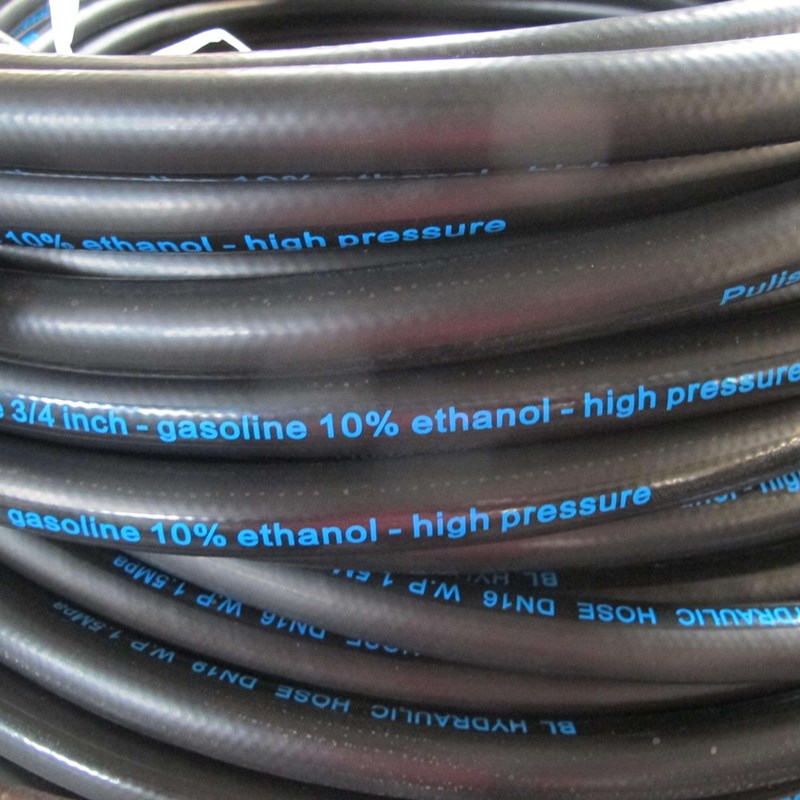335345435
Oct . 22, 2024 07:15 Back to list
Flexible Thermoplastic Hydraulic Hoses for Enhanced Fluid Transfer and Performance Applications
Understanding Thermoplastic Hydraulic Hoses Applications and Advantages
Hydraulic systems are central to numerous industrial applications, from construction machinery to agricultural equipment and everything in between. One critical component in these systems is the hydraulic hose, which enables the transmission of hydraulic fluids under pressure. While various materials are used for hydraulic hoses, thermoplastic hydraulic hoses have gained considerable popularity due to their unique properties and advantages.
What Are Thermoplastic Hydraulic Hoses?
Thermoplastic hydraulic hoses are manufactured from thermoplastic elastomers, which blend plastic and rubber characteristics to create a flexible, durable product. Unlike traditional rubber hydraulic hoses, thermoplastic hoses exhibit different physical and chemical properties, making them highly suitable for various applications.
Key Properties of Thermoplastic Hydraulic Hoses
1. Weight Thermoplastic hoses are lighter than their rubber counterparts. This reduced weight can significantly decrease the overall weight of hydraulic systems, leading to better fuel efficiency and easier handling.
2. Flexibility These hoses retain excellent flexibility even at low temperatures. This characteristic is especially important in applications where the hoses need to be routed through tight spaces or when equipment operates in cold environments.
3. Chemical Resistance Thermoplastic hydraulic hoses typically exhibit superior chemical resistance. They can withstand exposure to oils, fuels, and various chemicals without degrading, making them suitable for a wide range of applications.
4. Abrasion Resistance Many thermoplastic hoses are designed with outer covers that provide excellent abrasion resistance. This durability extends the service life of the hoses, reducing maintenance costs and downtime.
6. Temperature Range Thermoplastic hydraulic hoses can operate effectively within a broader temperature range compared to rubber hoses, allowing for versatility in different working conditions.
Applications of Thermoplastic Hydraulic Hoses
thermoplastic hydraulic hose

The versatility of thermoplastic hydraulic hoses enables their application across numerous industries
- Agriculture Used in tractors and other farming equipment, thermoplastic hoses enhance efficiency by delivering hydraulic power to various functions, such as plowing and lifting.
- Construction In construction machinery, such as excavators and bulldozers, these hoses are crucial for controlling hydraulic systems that operate heavy equipment.
- Manufacturing Thermoplastic hoses are widely used in manufacturing processes where the transport of hydraulic fluids is necessary, such as in assembly lines and automated systems.
- Automotive They serve various purposes within vehicles, including in power steering systems and hydraulic brake mechanisms.
- Marine Applications Their resistance to saltwater and chemicals makes them well-suited for marine environments, ensuring functionality even when exposed to harsh conditions.
Advantages Over Traditional Rubber Hoses
Thermoplastic hydraulic hoses present several advantages over traditional rubber hoses. First and foremost is their longevity and durability. The enhanced abrasion resistance and chemical compatibility mean that they can perform efficiently for extended periods, minimizing the need for replacements. Additionally, their lower weight can lead to improved operational efficiency, as lighter machinery tends to be more fuel-efficient and easier to operate.
Moreover, the flexibility of thermoplastic hoses reduces the risk of kinking and failure, which can be a concern with rubber hoses, especially in dynamic applications where the hoses are frequently moved or manipulated. This flexibility also allows for easier routing and installation, as they can be bent and positioned more easily without compromising their structural integrity.
Conclusion
Thermoplastic hydraulic hoses have emerged as a leading choice in hydraulic applications due to their impressive range of benefits, including weight reduction, flexibility, chemical and abrasion resistance, and high-pressure capabilities. As industries continue to evolve and demand more efficient and reliable hydraulic solutions, thermoplastic hoses are poised to play a vital role in the future of hydraulic system design and implementation. Their growing popularity underscores the importance of selecting the right materials for specific applications, ensuring optimal performance and durability.
-
SAE 100 R17 Black Smooth Cover Hydraulic Hose
NewsMar.07,2025
-
SAE 100 R17 Black Smooth Cover Hydraulic Hose
NewsMar.07,2025
-
SAE 100 R17 Black Smooth Cover Hydraulic Hose
NewsMar.07,2025
-
SAE 100 R17 Black Smooth Cover Hydraulic Hose
NewsMar.07,2025
-
SAE 100 R17 Black Smooth Cover Hydraulic Hose
NewsMar.07,2025
-
steel wire braided hydraulic hose
NewsMar.07,2025



